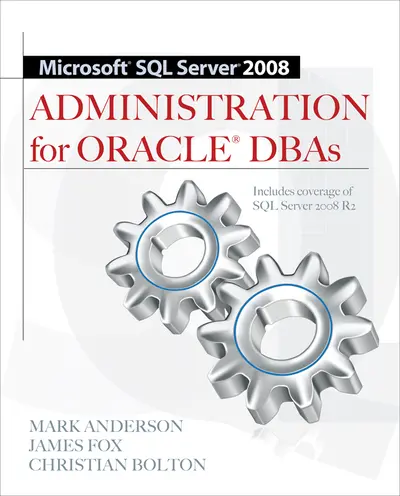My Account Details

ISBN10: 0071700641 | ISBN13: 9780071700641

Step 1 . Download Adobe Digital Editions to your PC or Mac desktop/laptop.
Step 2. Register and authorize your Adobe ID (optional). To access your eBook on multiple devices, first create an Adobe ID at account.adobe.com. Then, open Adobe Digital Editions, go to the Help menu, and select "Authorize Computer" to link your Adobe ID.
Step 3. Open Your eBook. Use Adobe Digital Editions to open the file. If the eBook doesn’t open, contact customer service for assistance.
Publisher's Note: Products purchased from Third Party sellers are not guaranteed by the publisher for quality, authenticity, or access to any online entitlements included with the product.
Leverage your Oracle DBA skills on Microsoft SQL Server 2008
Microsoft SQL Server 2008 Administration for Oracle DBAs shows you how to use your experience as an Oracle DBA to get up to speed quickly on the Microsoft SQL Server platform. Authors with real-world expertise in both Oracle and SQL Server introduce you to fundamental concepts, such as SQL Server architecture and core administration, before guiding you through advanced techniques, including performance optimization, high availability and disaster recovery. Platform comparisons, on-the-job examples, and answers to questions raised by Oracle DBAs learning the SQL Server environment help build your skills. This practical guide shows you how to:
- Identify the components of the SQL Server platform
- Understand SQL Server architecture
- Install and configure SQL Server software and client components
- Define and manage database objects
- Implement and administer database security
- Monitor, identify, and resolve performance issues
- Design and implement high availability, system backup, and disaster recovery strategies
- Automate SQL Server using built-in scheduling and alerting capabilities
- Import and export data to and from SQL Server and other RDBMS platforms
- Upgrade existing SQL Server installations and migrate Oracle databases to SQL Server
2 SQL Server Architecture
3 Installing and Configuring SQL Server
4 Database Objects
5 Security
6 Data Access and Transaction Control
7 Backup and Recovery
8 Performance Tuning and Optimization
9 High Availability and Disaster Recovery
10 Scheduling, Automation and Alerting
11 Data Movement
12 Upgrading and Migrating to SQL Server
Index
Need support? We're here to help - Get real-world support and resources every step of the way.
